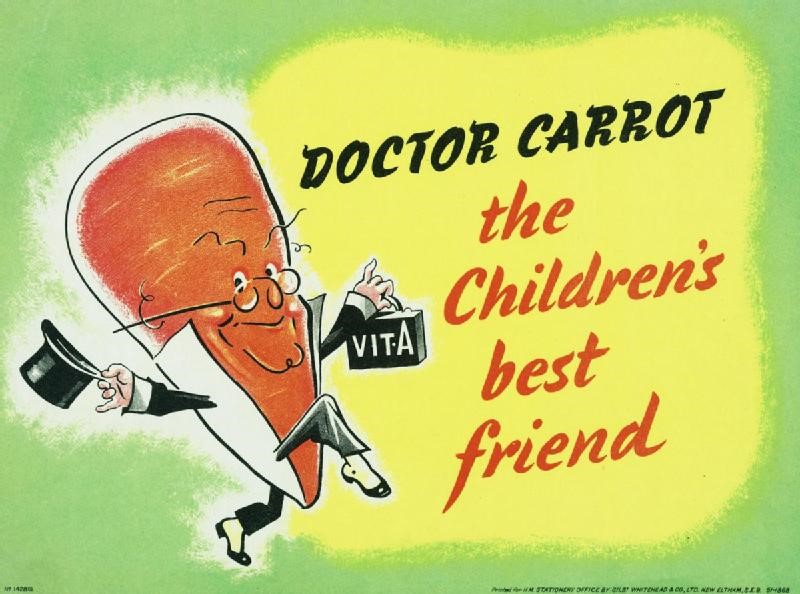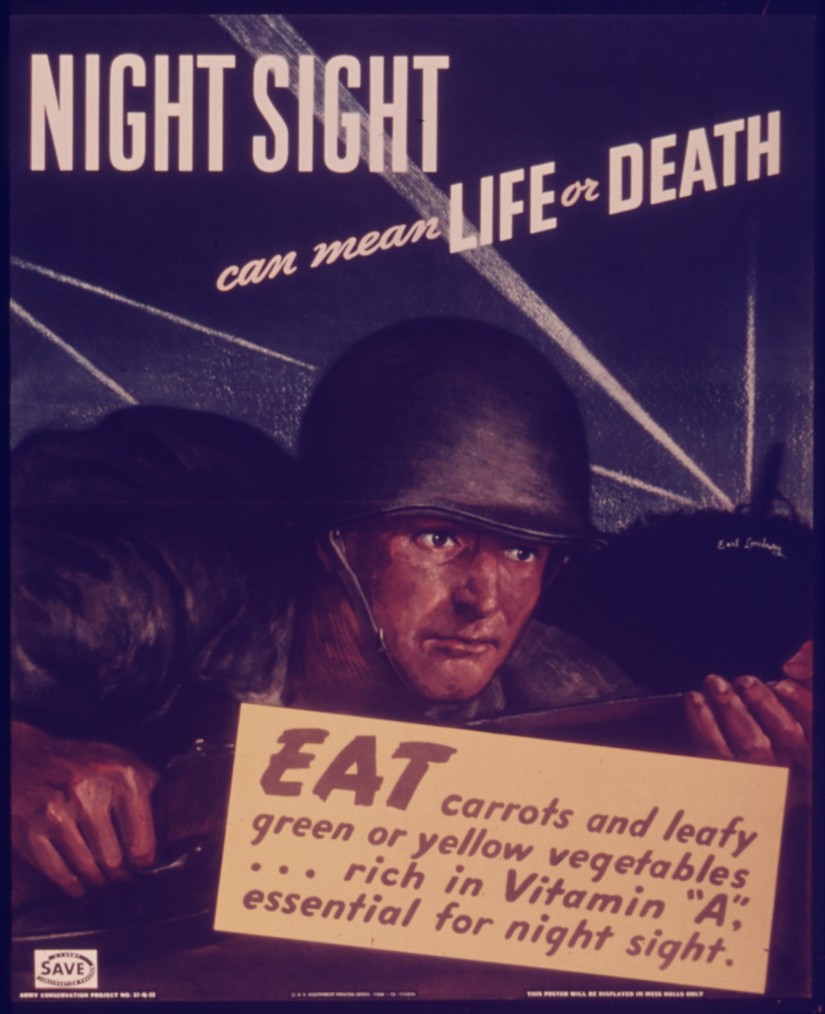Having a hard time getting your kids to eat their vegetables? Maybe Doctor Carrot can help!

Believe it or not, this goofy cartoon character had a serious role in history.
The summer of 1940 found London suffering under the German Blitz. Europe was overrun, the British Expeditionary Force having barely escaped annihilation on the beaches of Dunkirk. The United Kingdom relied heavily on imported goods; now the German U-boats threatened to isolate the British completely. (Prime Minister Winston Churchill recorded in his History of the Second World War that the only thing that ever really frightened him during the war was the U-boat peril.)
At risk of being starved out of the war, the Ministry of Food, steered by Lord Woolton, instituted a large scale program of rationing and conservation, and encouraged the people to plant their own ‘Victory Gardens.’
The programs were successful, but required the people to adapt. Many foods that had previously been staples were unobtainable.
The carrot was one instrumental filler food. Carrot recipes ‘cropped up,’ everywhere, from carrot curry to carrot ‘lollies,’ to Woolton Pie.
The carrot’s popularity was bolstered by hints the government publicized that perhaps one reason for the success of the RAF pilots during the Battle of Britain was their improved eyesight from large carrot consumption. Perhaps, posters speculated, carrots could even help members of the public see better during blackouts!

While the vision-enhancing powers of carrots may have been exaggerated, the programs were successful. The UK held on, and the Allies eventually triumphed.
Interestingly enough, (according to some sources,) the necessity of rationing and of food programs provided improved nutrition, health and I.Q. scores – blessings amid the trials.
If you are interested in finding out more on this topic, the following are a couple of my sources.
As for me, I’m craving carrot sticks!
Stolarczyk, John. “Carrots in World War 2.” World Carrot Museum. Copyright 1996-2015. http://www.carrotmuseum.co.uk/history4.html
Waller, Maureen. London 1945: Life in the Debris of War. New York, NY: St. Martin’s Press, 2004. Print.
On the U-Boat threat: http://www.bbc.co.uk/history/worldwars/wwtwo/battle_atlantic_01.shtml



This kind of propaganda doesn’t surprise me. I’ve rather wondered how our current kids would survive this kind of rationing. I doubt Dr. Carrot would be enough to lure my hooligans to the green side of the…garden…yeah…
LikeLiked by 1 person
Yeah, 🙂 Dr. Carrot is definitely a fellow from a bye-gone-age!
LikeLiked by 1 person
Tangent thought: It’s funny, the word propaganda- it has such negative connotations, (and plenty of negative uses! Uf- look at the awful forms from this time period) but in this case I can’t help thinking it was used positively- helping people use the necessary resources, made people healthier etc. Does that ring true?
LikeLiked by 1 person
I think so. It’s all about getting the people to follow government thought for government benefit; in this case, getting people to make their own rations, basically, was a win-win for all parties.
LikeLiked by 1 person